-
 Bitcoin
Bitcoin $83,443.6737
-1.76% -
 Ethereum
Ethereum $1,825.6264
-3.20% -
 Tether USDt
Tether USDt $0.9997
-0.02% -
 XRP
XRP $2.0597
-2.32% -
 BNB
BNB $597.9023
-1.48% -
 Solana
Solana $119.3459
-5.03% -
 USDC
USDC $0.9999
-0.01% -
 Dogecoin
Dogecoin $0.1660
-3.39% -
 Cardano
Cardano $0.6523
-3.11% -
 TRON
TRON $0.2359
-1.14% -
 Toncoin
Toncoin $3.8299
-5.08% -
 UNUS SED LEO
UNUS SED LEO $9.3665
0.55% -
 Chainlink
Chainlink $13.1586
-4.88% -
 Stellar
Stellar $0.2618
-2.77% -
 Sui
Sui $2.3705
0.07% -
 Avalanche
Avalanche $18.4778
-4.84% -
 Shiba Inu
Shiba Inu $0.0...01228
-1.59% -
 Hedera
Hedera $0.1637
-2.32% -
 Polkadot
Polkadot $4.0481
-1.61% -
 Litecoin
Litecoin $83.0708
-0.33% -
 MANTRA
MANTRA $6.3449
1.40% -
 Bitcoin Cash
Bitcoin Cash $299.2669
-2.15% -
 Bitget Token
Bitget Token $4.5420
-2.09% -
 Dai
Dai $0.9999
0.00% -
 Ethena USDe
Ethena USDe $0.9999
0.02% -
 Pi
Pi $0.6659
-4.49% -
 Hyperliquid
Hyperliquid $12.4532
-5.21% -
 Monero
Monero $215.7704
-0.13% -
 Uniswap
Uniswap $5.9598
-3.90% -
 Aptos
Aptos $5.2030
-1.76%
How do I adjust slippage tolerance in Trust Wallet?
Adjust slippage tolerance on Uniswap via Trust Wallet by setting a percentage in the "Slippage Tolerance" field before confirming your swap transaction.
Mar 27, 2025 at 11:14 am
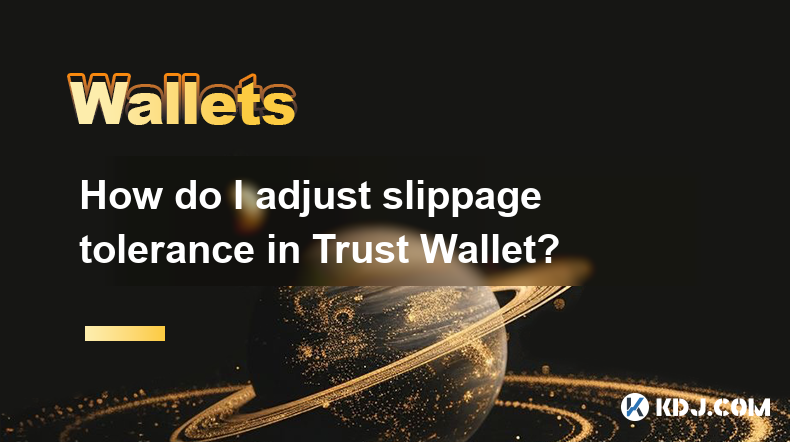
Understanding Slippage in Cryptocurrency Trades
Slippage refers to the difference between the expected price of a cryptocurrency trade and the actual price at which the trade is executed. This discrepancy often arises due to market volatility, especially during periods of high trading volume. A higher slippage means you're paying more (or receiving less) than anticipated. Understanding and managing slippage is crucial for successful cryptocurrency trading. Trust Wallet, like many other exchanges, allows you to adjust your tolerance for slippage to mitigate potential losses.
Locating the Slippage Tolerance Setting in Trust Wallet
Trust Wallet doesn't offer a direct, centralized "slippage tolerance" setting like some dedicated cryptocurrency exchanges. The slippage tolerance is implicitly managed within the decentralized exchange (DEX) you're using through Trust Wallet. This usually involves interacting with a DEX like Uniswap, PancakeSwap, or others directly within the Trust Wallet interface. The process varies slightly depending on the DEX. You won't find a global setting within Trust Wallet itself to control slippage across all DEX interactions.
Adjusting Slippage Tolerance on Popular DEXs via Trust Wallet
The method for adjusting slippage tolerance differs depending on the specific DEX. Let's examine a few popular examples:
Uniswap (and similar DEXs using the same interface): When initiating a swap on Uniswap via Trust Wallet, you'll see a field usually labeled "Slippage Tolerance." This field typically allows you to input a percentage value. A lower percentage (e.g., 0.1%) means you'll only accept trades that fall within 0.1% of your expected price. A higher percentage (e.g., 1%) increases your chances of a successful trade but also increases the risk of unfavorable slippage. Always carefully consider your chosen percentage based on market conditions.
PancakeSwap (and similar DEXs using the same interface): Similar to Uniswap, PancakeSwap (accessed through Trust Wallet) usually presents a "Slippage Tolerance" option during the swap process. This is often represented as a percentage. Choosing a lower percentage reduces slippage risk but may lead to failed trades if the market moves too quickly. A higher percentage increases the likelihood of trade execution but exposes you to potentially larger slippage.
Other DEXs: Other decentralized exchanges accessible through Trust Wallet may have slightly different interfaces. However, the core concept remains the same. Look for settings related to "slippage," "price impact," or similar terms. Always read the instructions and warnings provided by the specific DEX before adjusting any settings.
Factors Affecting Slippage Tolerance
Several factors influence the optimal slippage tolerance you should set:
Market Volatility: During periods of high volatility, setting a higher slippage tolerance might be necessary to ensure your trade executes. Conversely, during calmer periods, a lower tolerance is generally preferable.
Trade Size: Larger trades tend to experience more slippage than smaller ones. This is because a large order can significantly impact the market price. For larger trades, a higher slippage tolerance might be necessary.
Liquidity: Assets with high liquidity usually exhibit less slippage. Low liquidity assets are more susceptible to price fluctuations during trades, potentially resulting in higher slippage.
Step-by-Step Guide (Example: Uniswap via Trust Wallet)
Let's outline a hypothetical step-by-step guide for adjusting slippage tolerance on Uniswap through Trust Wallet:
Open Trust Wallet: Launch the Trust Wallet application on your mobile device.
Access Uniswap: Navigate to the DApp browser within Trust Wallet and access the Uniswap interface.
Initiate a Swap: Select the tokens you wish to swap and enter the desired amounts.
Locate Slippage Tolerance: Before confirming the transaction, look for the "Slippage Tolerance" or similar setting.
Adjust the Percentage: Enter your desired slippage tolerance percentage. Remember, lower percentages are safer but may lead to failed trades, while higher percentages increase the risk of unfavorable slippage.
Review and Confirm: Double-check all details before confirming the transaction.
Understanding the Implications of Different Slippage Tolerances
Choosing a very low slippage tolerance can lead to failed transactions, especially during volatile market conditions. A trade might fail to execute if the market price moves beyond your specified tolerance before the transaction is confirmed. On the other hand, selecting a very high slippage tolerance increases the risk of significant losses due to unfavorable price movements. The optimal slippage tolerance depends on your risk appetite and market conditions. It's always advisable to start with a lower tolerance and gradually increase it if necessary.
Frequently Asked Questions
Q: What happens if my trade fails due to insufficient slippage tolerance?
A: If your trade fails due to insufficient slippage tolerance, your transaction will simply not be executed. Your funds will remain in your Trust Wallet.
Q: Can I adjust slippage tolerance after initiating a trade?
A: No, you cannot adjust the slippage tolerance after initiating a trade. The slippage tolerance must be set before confirming the transaction.
Q: Is there a "best" slippage tolerance setting?
A: There's no single "best" slippage tolerance. The optimal setting depends on various factors, including market volatility, trade size, and your risk tolerance. A range of 0.5% to 1% is often considered acceptable for many trades, but this can vary significantly.
Q: Why is slippage tolerance important?
A: Slippage tolerance is crucial because it protects you from unexpected price changes during the execution of your trade. Setting an appropriate tolerance helps manage risk and prevents potentially significant losses.
Q: Does slippage only affect buying trades?
A: No, slippage affects both buying and selling trades. The price discrepancy can occur in either direction, impacting both your purchase price and your sale price.
Q: Where can I find more information about slippage?
A: You can find more information about slippage by searching online resources, consulting cryptocurrency trading guides, or reviewing the documentation provided by the specific DEX you're using. Many educational resources are available to help you understand this important concept.
Disclaimer:info@kdj.com
The information provided is not trading advice. kdj.com does not assume any responsibility for any investments made based on the information provided in this article. Cryptocurrencies are highly volatile and it is highly recommended that you invest with caution after thorough research!
If you believe that the content used on this website infringes your copyright, please contact us immediately (info@kdj.com) and we will delete it promptly.
- Grayscale Investments Launches Two New Bitcoin (BTC) Exchange-Traded Funds (ETFs)
- 2025-04-03 09:15:12
- US President Donald Trump announced reciprocal tariffs against every country with a trade relationship with the US
- 2025-04-03 09:15:12
- BlockDAG Launches Beta Testnet With $200M Raised, Ethereum Approaches $2,000 & Tether Expands Into Media
- 2025-04-03 09:10:12
- Trump Announces New Base Tariff of 10% on All Countries, Targeting EU and Japan with Higher Duties
- 2025-04-03 09:10:12
- Fidelity launches new retirement accounts that will allow Americans to invest in crypto nearly fee-free
- 2025-04-03 09:05:12
- AAVE Price Dipped Following Large-Scale Whale Sell-offs, But Technical Charts Hint at a Potential Bullish Reversal
- 2025-04-03 09:05:12
Related knowledge
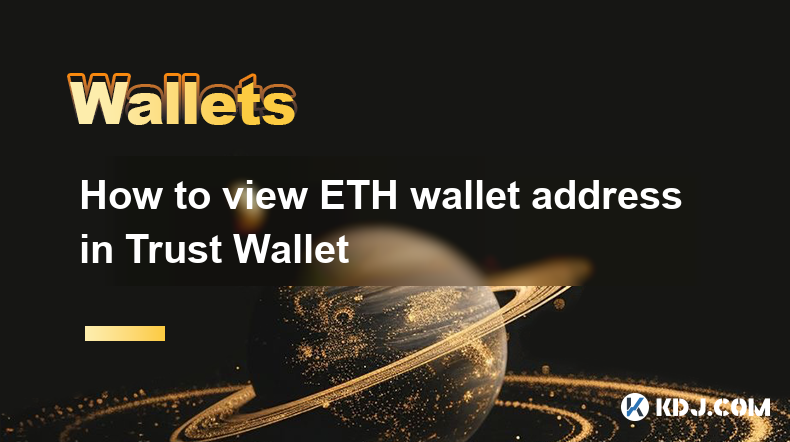
How to view ETH wallet address in Trust Wallet
Apr 02,2025 at 10:56pm
Managing your Ethereum (ETH) wallet address is crucial for anyone involved in the cryptocurrency space, especially when using popular mobile wallets like Trust Wallet. This guide will walk you through the process of viewing your ETH wallet address in Trust Wallet, ensuring you can confidently engage in transactions, receive funds, and manage your digita...
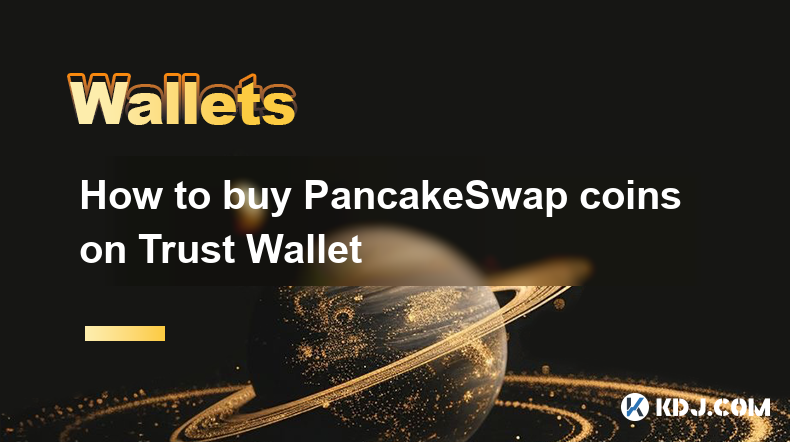
How to buy PancakeSwap coins on Trust Wallet
Apr 03,2025 at 12:28am
Buying PancakeSwap coins (CAKE) on Trust Wallet involves a few straightforward steps. Trust Wallet is a popular mobile wallet that supports a wide range of cryptocurrencies, including CAKE. To begin, you'll need to download and set up Trust Wallet on your mobile device. Once installed, you can easily purchase CAKE directly within the app using various p...
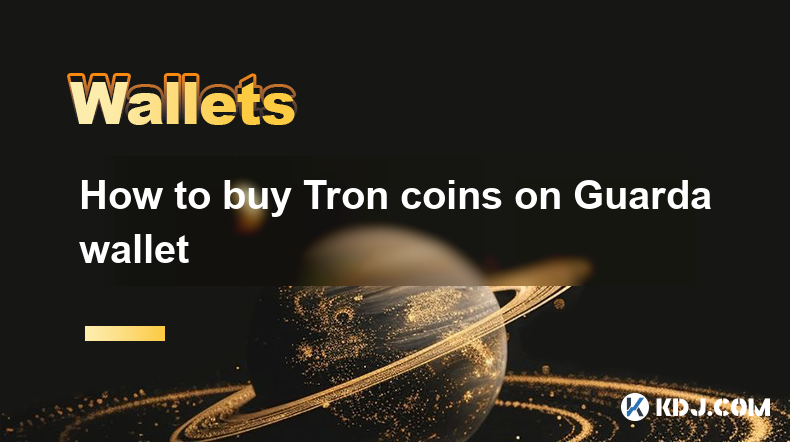
How to buy Tron coins on Guarda wallet
Apr 03,2025 at 06:57am
Buying Tron (TRX) coins using the Guarda wallet is a straightforward process that can be completed in a few simple steps. Guarda wallet is a popular choice among cryptocurrency enthusiasts due to its user-friendly interface and support for a wide range of cryptocurrencies, including Tron. In this guide, we will walk you through the process of purchasing...
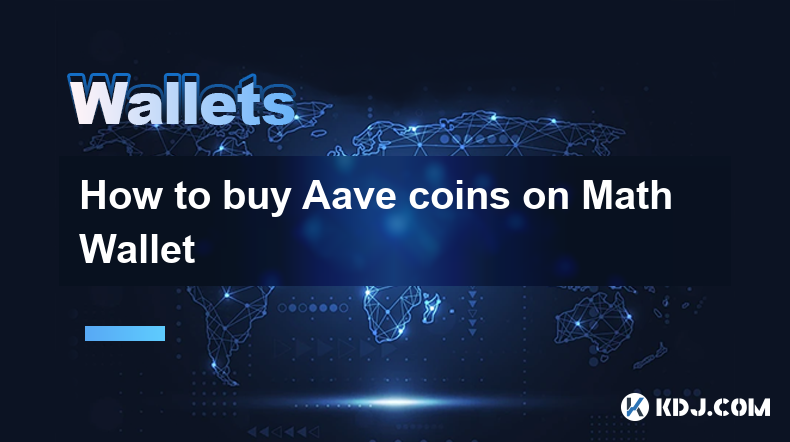
How to buy Aave coins on Math Wallet
Apr 03,2025 at 06:35am
Buying Aave coins on Math Wallet involves a few straightforward steps that can be easily followed. Math Wallet is a versatile multi-chain wallet that supports a wide range of cryptocurrencies, including Aave. To begin, you'll need to set up your Math Wallet and ensure it's connected to the appropriate blockchain network. Once your wallet is ready, you c...
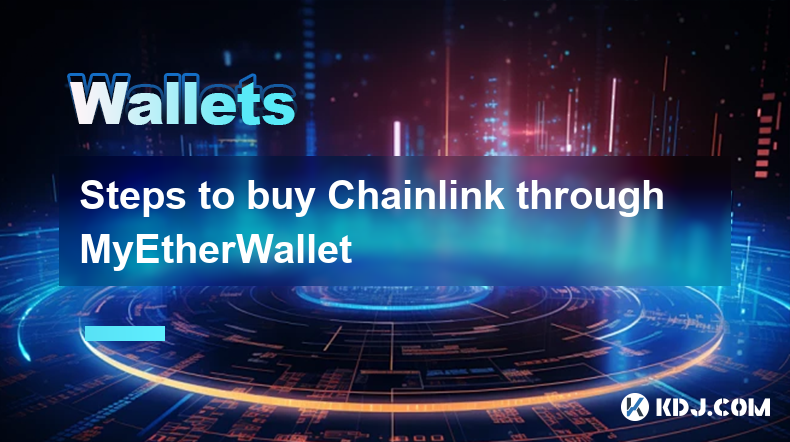
Steps to buy Chainlink through MyEtherWallet
Apr 03,2025 at 01:07am
To buy Chainlink (LINK) through MyEtherWallet (MEW), you need to understand the process and tools involved. MyEtherWallet is a popular online interface that allows you to interact with the Ethereum blockchain. Chainlink, on the other hand, is an Ethereum-based token that powers a decentralized oracle network. To purchase LINK using MEW, you will need to...
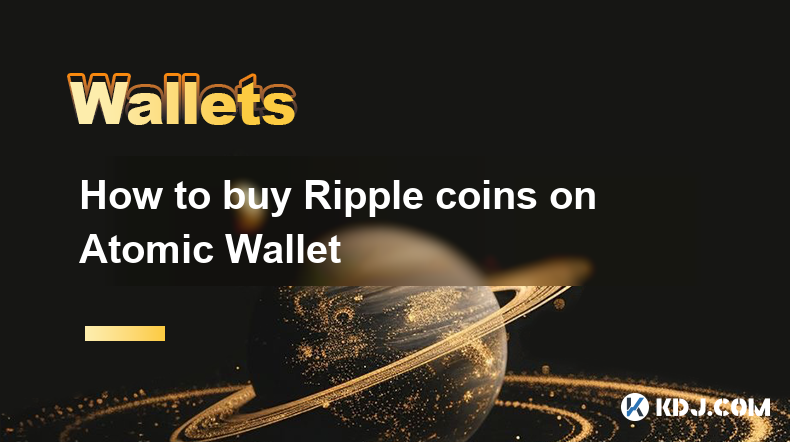
How to buy Ripple coins on Atomic Wallet
Apr 03,2025 at 03:00am
Buying Ripple (XRP) coins on Atomic Wallet is a straightforward process that allows you to manage your cryptocurrency securely. Atomic Wallet is a decentralized, multi-asset wallet that supports over 300 cryptocurrencies, including Ripple. To get started, you'll need to download the Atomic Wallet application, set up your wallet, and then proceed to buy ...

How to view ETH wallet address in Trust Wallet
Apr 02,2025 at 10:56pm
Managing your Ethereum (ETH) wallet address is crucial for anyone involved in the cryptocurrency space, especially when using popular mobile wallets like Trust Wallet. This guide will walk you through the process of viewing your ETH wallet address in Trust Wallet, ensuring you can confidently engage in transactions, receive funds, and manage your digita...

How to buy PancakeSwap coins on Trust Wallet
Apr 03,2025 at 12:28am
Buying PancakeSwap coins (CAKE) on Trust Wallet involves a few straightforward steps. Trust Wallet is a popular mobile wallet that supports a wide range of cryptocurrencies, including CAKE. To begin, you'll need to download and set up Trust Wallet on your mobile device. Once installed, you can easily purchase CAKE directly within the app using various p...

How to buy Tron coins on Guarda wallet
Apr 03,2025 at 06:57am
Buying Tron (TRX) coins using the Guarda wallet is a straightforward process that can be completed in a few simple steps. Guarda wallet is a popular choice among cryptocurrency enthusiasts due to its user-friendly interface and support for a wide range of cryptocurrencies, including Tron. In this guide, we will walk you through the process of purchasing...

How to buy Aave coins on Math Wallet
Apr 03,2025 at 06:35am
Buying Aave coins on Math Wallet involves a few straightforward steps that can be easily followed. Math Wallet is a versatile multi-chain wallet that supports a wide range of cryptocurrencies, including Aave. To begin, you'll need to set up your Math Wallet and ensure it's connected to the appropriate blockchain network. Once your wallet is ready, you c...

Steps to buy Chainlink through MyEtherWallet
Apr 03,2025 at 01:07am
To buy Chainlink (LINK) through MyEtherWallet (MEW), you need to understand the process and tools involved. MyEtherWallet is a popular online interface that allows you to interact with the Ethereum blockchain. Chainlink, on the other hand, is an Ethereum-based token that powers a decentralized oracle network. To purchase LINK using MEW, you will need to...

How to buy Ripple coins on Atomic Wallet
Apr 03,2025 at 03:00am
Buying Ripple (XRP) coins on Atomic Wallet is a straightforward process that allows you to manage your cryptocurrency securely. Atomic Wallet is a decentralized, multi-asset wallet that supports over 300 cryptocurrencies, including Ripple. To get started, you'll need to download the Atomic Wallet application, set up your wallet, and then proceed to buy ...
See all articles
























































































